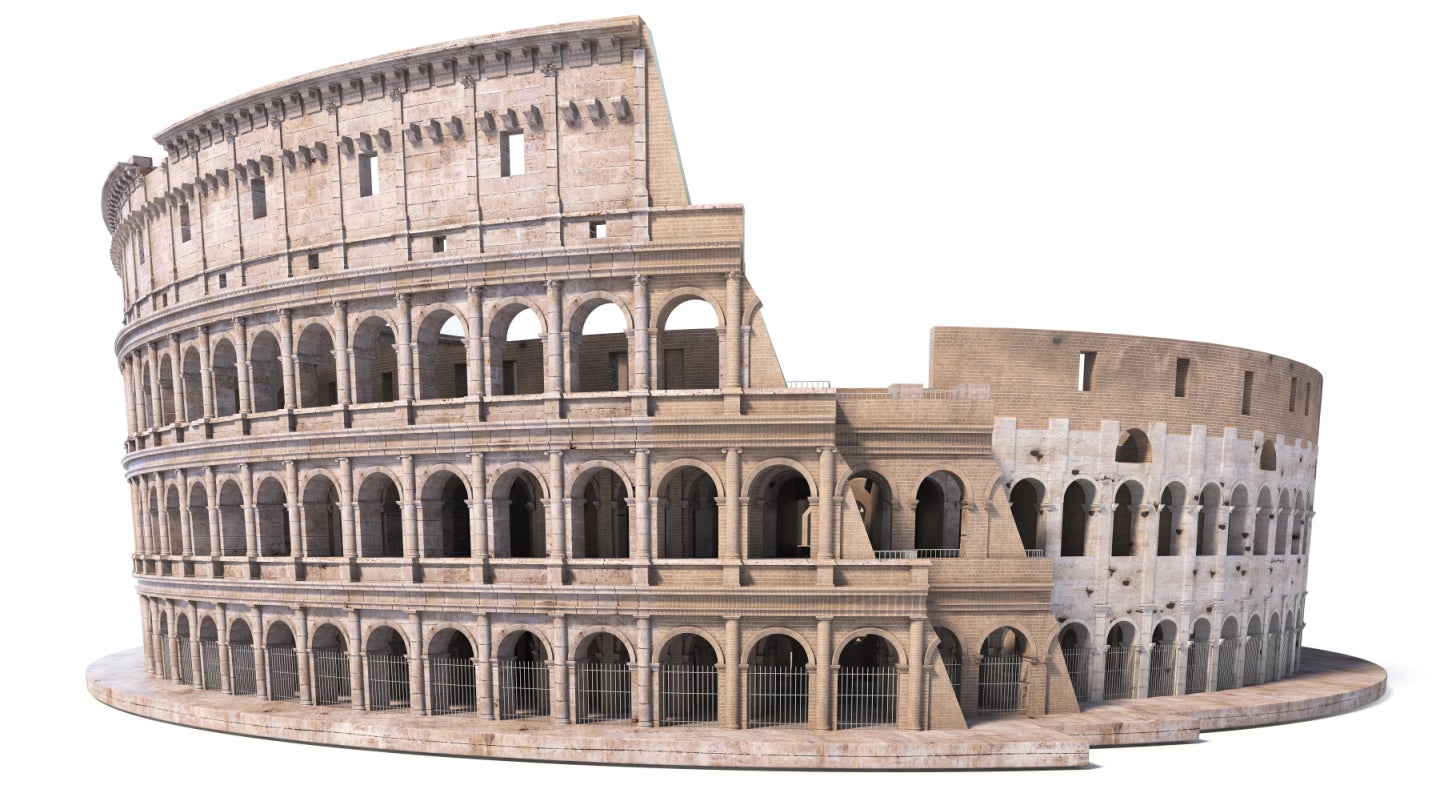Emmanuel Durand, a 53-year-old French engineer based in Geneva, has been volunteering his time to create a digital framework that preservationists can use to repair heritage landmarks that have been damaged during the Ukraine war.
Last year, Durand used a 3D laser scanner that records 500,000 points per second to create a digital twin of the Kharkiv fire station, built in 1887.
Durand’s efforts highlight the importance of cultural heritage sites as a part of our collective history, and natural disasters and wars make it harder for us to preserve the past for future generations. Technology, such as that used by Duran, has been playing an increasingly significant role in preserving and restoring cultural heritage sites around the world.
3D modelling and drones for heritage sites
The first, and perhaps most apparent way, in which technology is being used is through 3D scanning and modelling. Having highly accurate and detailed digital twins of cultural heritage sites makes studying and analysing them much easier. These tools can also create detailed digital models, resulting in virtual tours, such as the British Museum’s virtual tour of the famous Rosetta Stone.
3D scanners come in many different forms, but in most cases, they will involve the projection of things like lasers or structured light along the surface of an object while sensor cameras continuously record the changing distance and shape of the projection. Companies that provide 3D scanning technology for cultural heritage applications include CyArk, Faro Technologies, Leica Geosystems, Trimble, and Autodesk, some of which are not-for-profit entities.
3D scanning also extends to drones, which can be used to survey large areas quickly and safely, providing detailed images of cultural heritage sites from multiple angles. Drones can also be used to actively monitor these sites for signs of deterioration or damage, allowing for prompt intervention by experts.

US Tariffs are shifting - will you react or anticipate?
Don’t let policy changes catch you off guard. Stay proactive with real-time data and expert analysis.
By GlobalDataArtificial intelligence
Artificial intelligence (AI) has taken center stage thus far in 2023 and for good reason. AI can be used to increase the efficiency of most modern processes, and maintaining cultural heritage is no exception.
The vast amounts of data collected from heritage sites, paintings, and sculptures can be quickly analysed using AI algorithms. AI can be used to identify areas of cultural heritage sites that are at risk of damage or deterioration. For example, the Institute of Digital Archaeology is using AI algorithms to analyse satellite imagery of Palmyra, an ancient city in Syria that has been damaged by war, to identify areas that need urgent restorations.
AI can also be used to restore parts of structures and paintings that have been damaged over centuries. For example, algorithms can analyse brush strokes, techniques, colour schemes, and more to find missing pieces of art. The more data we use to train these algorithms the better they will perform.
Virtual and augmented reality
Virtual, and augmented reality (VR/AR) technologies are being used to enhance the visitor experience at cultural heritage sites. Using VR/AR, we can recreate historical events, allowing visitors to experience them first hand.
For example, the Anne Frank House in Amsterdam has created a virtual reality experience that allows visitors to walk through the secret annex, where Anne Frank and her family hid during World War II. While technology has proven useful in these scenarios, not every heritage site needs restoration.
Heritage sites – maintain or restore?
Debate exists as to whether or not restoration reduces the sentimental value of heritage sites. The Rome Colosseum has been subject to several such debates.
Many were against the restoration in the 1990s as they argued that much of the damage was natural, from an earthquake in the 1930s.
The 2012 restoration initiative was also controversial, with many arguing the project should have been undertaken by specialists and experts, instead of from a private donation from an Italian fashion house, possibly reducing the historic value of the iconic site.
Perhaps a war or natural disaster that happens today could become history for a particular structure, no matter how old it is. Should we instead be focusing more on maintenance than restoration?









